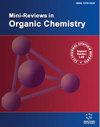真菌漆酶在纺织染料污染物生物降解中的应用进展与挑战
IF 1.9
4区 化学
Q2 CHEMISTRY, ORGANIC
引用次数: 0
摘要
根据欧洲环境署的数据,纺织行业因染整产品而造成的水污染占全球的20%,因此面临严峻的环境挑战。设计出能够从工业废水中去除染料的更具生物相容性和可持续性的处理工艺来对抗这种环境危害是至关重要的。化学工业必须改变传统的以化学为基础的概念,采用更环保、更绿色的工艺来去除包括染料在内的污染物。酶生物修复是一种智能工具,也是环境污染物降解的一种有前景的替代方法。在染料脱色过程中使用酶使该过程成为传统化学处理的绿色和清洁的替代方法。此外,与化学反应相比,酶介导的生物催化减少了有毒副产物的形成。用于染料脱色的最常用的酶是漆酶。漆酶是一种多铜氧化酶,存在于真菌等多种生物体中。它促进酚类化合物的氧化,并具有广泛的底物特异性,使其成为一种有前途的酶,用于去除纺织工业中使用的各种染料,包括顽固的芳香染料。本文对纺织染料脱色、脱色类型、漆酶介导染料生物修复技术的最新进展、生物催化机理、局限性和挑战进行了综述。重点介绍了漆酶在染料生物修复过程中的化学途径和反应机理。此外,还简要介绍了纺织工业及其各自的传统纺织废水处理工艺。本文章由计算机程序翻译,如有差异,请以英文原文为准。
Recent Developments and Challenges in the Application of Fungal Laccase for the Biodegradation of Textile Dye Pollutants
According to the European Environment Agency, the textile industry is responsible for 20% of global water pollution due to dyeing and finishing products, thus facing severe environmental challenges. It is essential to design more biocompatible and sustainable treatment processes capable of removing dyes from industrial wastewater to fight this environmental hazard. Chemical industries must change traditional chemical-based concepts to more environmentally friendly and greener processes to remove pollutants, including dyes. Enzymatic bioremediation is a smart tool and a promising alternative for environmental pollutant degradation. The use of enzymes in dye decolourization makes the process a green and clean alternative to conventional chemical treatments. Moreover, enzyme-mediated biocatalysis decreases the formation of toxic by-products compared to chemical reactions. The most used enzyme for the decolourization of dyes is laccase. Laccase is a multicopper oxidase found in diverse organisms such as fungi. It promotes the oxidation of phenolic compounds and has a wide range of substrate specificity, making it a promising enzyme for removing different dyes used by the textile industry, including recalcitrant aromatic dyes. The present article gives a comprehensive revision of textile dye decolourization, its types, recent developments in laccase-mediated dye bioremediation technologies, the mechanism of biocatalysis, and their limitations and challenges. Emphasis on the chemical pathways of laccase reaction mechanisms for dye bioremediation processes is also provided. In addition, a brief overview of textile industries and the respective traditional treatment processes for textile wastewater is also presented.
求助全文
通过发布文献求助,成功后即可免费获取论文全文。
去求助
来源期刊
CiteScore
4.50
自引率
4.30%
发文量
116
审稿时长
>12 weeks
期刊介绍:
Mini-Reviews in Organic Chemistry is a peer reviewed journal which publishes original reviews on all areas of organic chemistry including organic synthesis, bioorganic and medicinal chemistry, natural product chemistry, molecular recognition, and physical organic chemistry. The emphasis will be on publishing quality papers very rapidly, without any charges.
The journal encourages submission of reviews on emerging fields of organic chemistry including:
Bioorganic Chemistry
Carbohydrate Chemistry
Chemical Biology
Chemical Process Research
Computational Organic Chemistry
Development of Synthetic Methodologies
Functional Organic Materials
Heterocyclic Chemistry
Macromolecular Chemistry
Natural Products Isolation And Synthesis
New Synthetic Methodology
Organic Reactions
Organocatalysis
Organometallic Chemistry
Theoretical Organic Chemistry
Polymer Chemistry
Stereochemistry
Structural Investigations
Supramolecular Chemistry

 求助内容:
求助内容: 应助结果提醒方式:
应助结果提醒方式:


